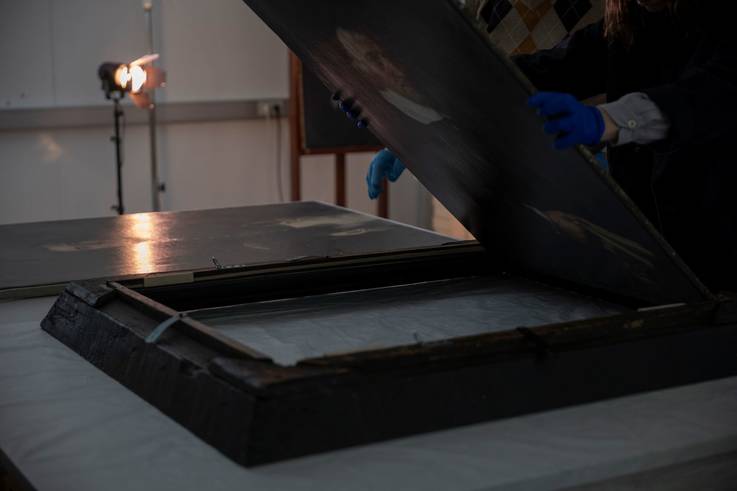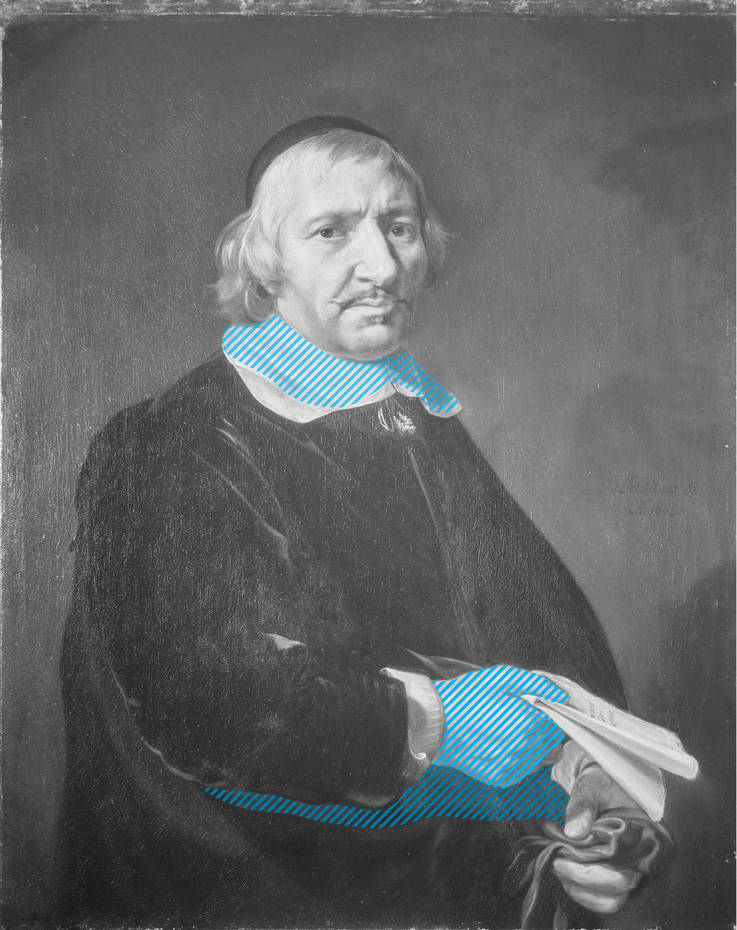Scientific imaging reveals Jan De Bray’s artistic process in his work Portrait of Andries Van Hoorn.
One of our most fascinating jobs is the technical study of artworks, which can be defined as the physical understanding of the object. For example, a painting is traditionally made up of different layers; the support, a ground layer, an under drawing and the final paint layer. By examining this structure, we analyse the materials and techniques used to create these masterpieces. To access the different layers, we use non-destructive techniques, which include scientific imaging like photography in normal light, ultraviolet light (UV) and infrared light (IR). This meticulous study not only enriches our understanding of cultural heritage, but also provides valuable insights into the art-making processes of different time periods.
When the Portrait of Andries Van Hoorn, by Dutch 17th century painter Jan De Bray (1627-1697), arrived at our restoration studio, it underwent this imaging protocol. The findings from the infrared photographs were particularly revealing, offering a fascinating glimpse into the artist’s creative process. IR can detect underdrawings and other primary stages (the initial drawn or painted composition on the canvas), which are often masked by the painted surface. What secrets lie in the depths of this portrait? Join us as we delve deeper into this imaging technique and uncover the hidden stories it tells about the artwork’s creation.

A captivating dive
Infrared light allows us to dive into materials. At a longer wavelength than visible light, it passes through paint layers until it is absorbed or reflected back. In practice, this technique involves pointing an IR light source at the painting’s front. The light is then absorbed by certain materials like carbon-based substances, often used as drawing media. A specialised camera captures the contrast between reflected and absorbed light, revealing the underlying drawings. As this method did not help us detect any underdrawing in the Portrait of Andries Van Hoorn, we then used a complementary technique called transmitted infrared photography.For this analysis, the light source is placed behind the artwork and the camera in front of it. This produces an image with less contrast but greater translucency, helping us further understand the layers.

Doodverf or dead-colouring
With this method, we managed to detect a preliminary stage of the creation that comes after the drawing: dead-colouring. Doodverf in 17th century Dutch painting refers to any painted stages between the underdrawing and the finished, “alive” painting in its full detail and colour. It could range from monochrome modeling in brown, green or gray to coloured tints to plan out the composition. In the transmitted IR we could clearly see that the main forms and shadows were painted in a sketch to determine the figure’s position. Most shading has been modified in the painted version, making it clear that this is a preliminary stage. Other compositional changes can be seen if we compare the IR picture and the final painting.

Pentimenti or regrets
The exact terminology for these adjustments is pentimenti, from the Italian word for “regretting”. A notable change is the right arm of the sitter, which was originally positioned lower but later adjusted slightly higher. In the sketch, the fingers of his right hand were also initially more curled, and his collar simpler. It was later refined and extended on the left side.
Using infrared light, we traveled together back to the 17th century and got a glimpse of De Bray’s practice. We uncovered the dead-colouring stage, which usually follows the drawing. However, we cannot conclude that there is no underdrawing just because we have not detected it – absence of evidence is not evidence of absence. As we continue to implement innovative techniques, the boundaries of discovery are constantly expanding, with many more hidden insights still waiting to be revealed.
Text: Elisa Barzotti and Laura Guilluy / Images: Eric Chenal / Tom Lucas / Tamara Zorn
Source: MuseoMag N° I - 2025
